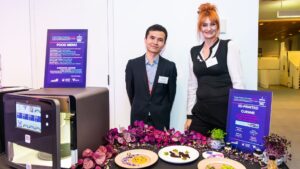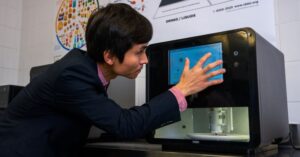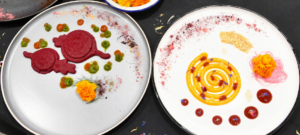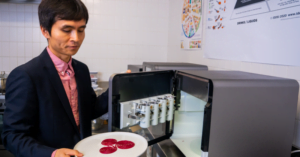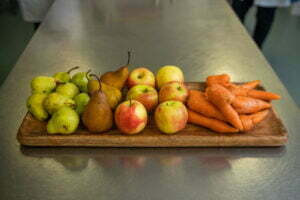Researchers from Edith Cowan University are using innovative food technology to boost the fruit and vegetable intake of Australians, from primary school students to aged care residents.
By 3D printing food, researchers are aiming to make meals more interesting and more enticing to groups who may not get their daily serve of two fruit and five veg.
At ECU, the produce is chopped, freeze dried and pureed to create ‘inks’, which are then printed into a range of enticing designs.
Depending on the audience, these custom-designed meals can either look like the real thing, such as pea puree printed into the shape of peas. Or resemble animals, spacecraft and abstract geometric shapes.
“For residents on texture modified diets, if we make their meals more appealing, they will be more likely to eat those meals and avoid malnutrition.”
Dr Liezhou Zhong
Making nursing home food more enticing
ECU Nutrition & Health Innovation Research Institute Post Doctoral Research Fellow Dr Liezhou Zhong said up to two thirds of older Australians in residential aged care suffer from malnutrition, a leading indicator for frailty and a variety of other health conditions.
“Residents in aged care who have problems chewing or swallowing often eat a texture modified diet, where food is pureed, and minimal time or money is put toward making it look or taste good,” he said.
Dr Zhong and his colleagues believe part of that problem is attributed to residents who have problems chewing or swallowing and therefore find their pureed meals unattractive.
“For residents on texture modified diets, if we make their meals more appealing, they will be more likely to eat those meals and avoid malnutrition,” he said.
Dr Zhong said for this group, the challenge was to make the meals closely resemble the original raw product.
”We believe this project is the first to focus on using 3D printing with fruits and vegetables.”
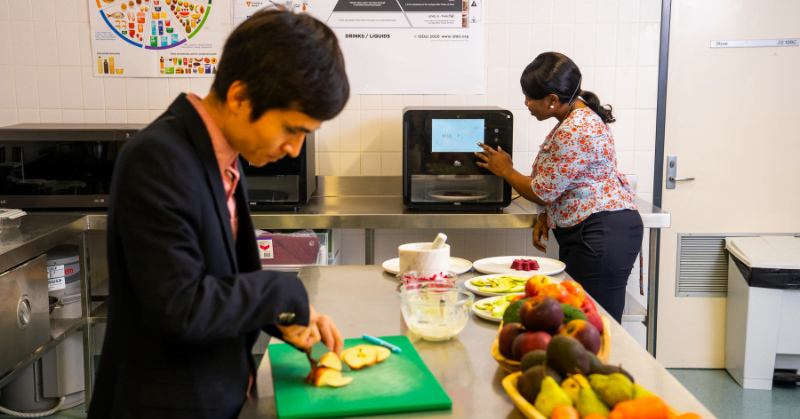
Finding solutions to food waste
3D printing food also helps to reduce food waste by using produce deemed unsuitable by retailers due to blemishes or unusual shapes.
Dr Zhong said there was huge potential for using lower grade produce in the Institute’s research projects.
“We can use these ugly fruits and vegetables because the produce we’re using to create the inks for our printers is pureed, so it doesn’t matter what it looks like,” he said.
“We’re working with chefs, farmers and producers to ensure food that would normally go to waste can still find a use and importantly tastes and looks good.”




